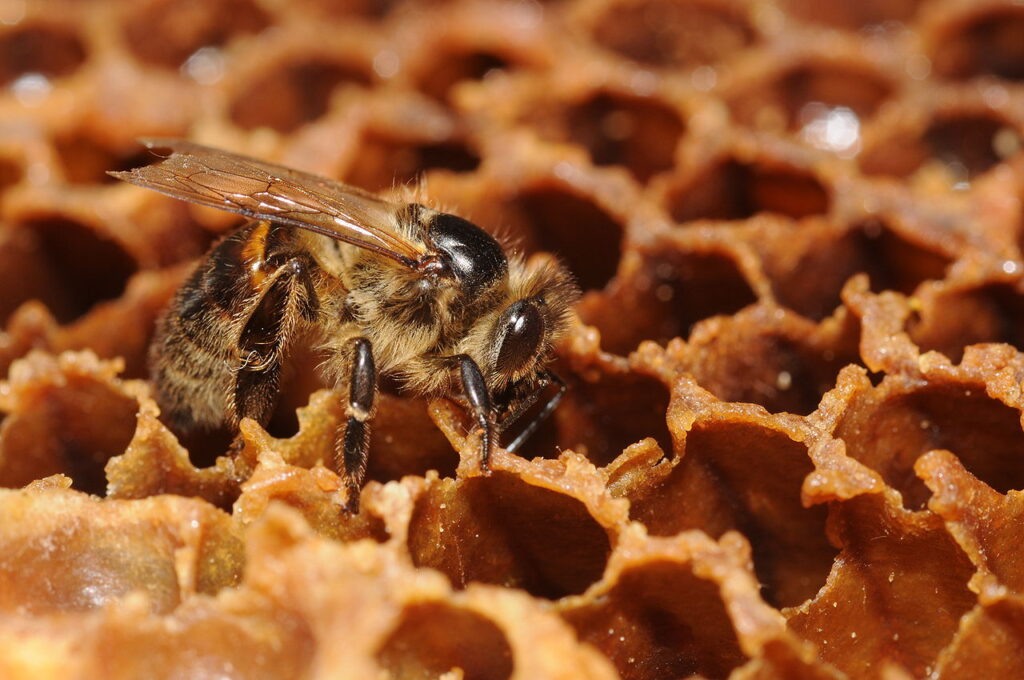
Honey bees, or Apis species, are among the most well-known and important insects due to their role in pollination and honey production. They are typically brown, black, and orange, and can range from 1/2 to 1 inch long with an oval-shaped body. Honey bee colonies have a distinct social structure consisting of three castes: queens, drones, and workers.
Description and Habits of Honey Bees
Honey bee colonies contain one queen, a small number of drones (males), and tens of thousands of workers. The queen’s role is reproduction, while drones mate with queens from other colonies before dying. Workers, which make up the bulk of the colony, are responsible for tasks such as feeding the queen, defending the hive, and foraging for nectar and pollen.
A unique aspect of honey bee life is their communication method. When foragers find nectar, they perform a “waggle dance” to inform other bees of the location and distance to the food source.
Honey bees can sting, but only the female workers. Once they sting, their barbed stingers get lodged in the skin, causing the bee to die. To remove the stinger safely, it should be scraped off the skin without squeezing, as doing so may release more venom.
Biology and Life Cycle
Honey bees undergo complete metamorphosis, developing from eggs to larvae, pupae, and adults. The queen can lay her weight in eggs daily, and workers tend to the brood (eggs and larvae). Some larvae are fed “royal jelly,” which causes them to develop into queens instead of workers.
When a colony grows large, it will swarm—meaning the old queen leaves with part of the workers to establish a new hive. The remaining bees raise a new queen, who will mate in flight and take over the original colony.
Control and Management of Honey Bees
Honey bee swarms can often be managed without the use of pesticides. Contacting a local beekeeper to safely remove the swarm is the preferred option. In cases where a swarm has established a brood chamber or built comb, removal becomes more complex and may require insecticides or professional help. Proper sealing of entry points in walls or structures is crucial to prevent re-infestation, as dead bees or leftover honey can attract other pests.
If you’re facing a honey bee or wild bee infestation, let our experienced team at Traffic Pest Solutions help. We offer safe, effective, and environmentally conscious pest control services. Protect your home and the local ecosystem with our expert guidance.
Learn more about the current threats facing honey bees and wild bees and what can be done to help in this informative article: Are Honey Bees and Wild Bees Still in Trouble?
